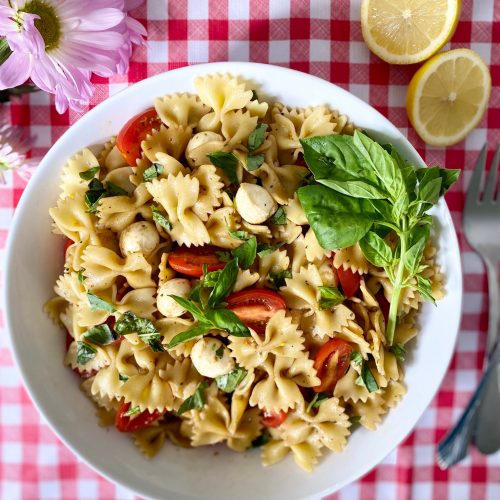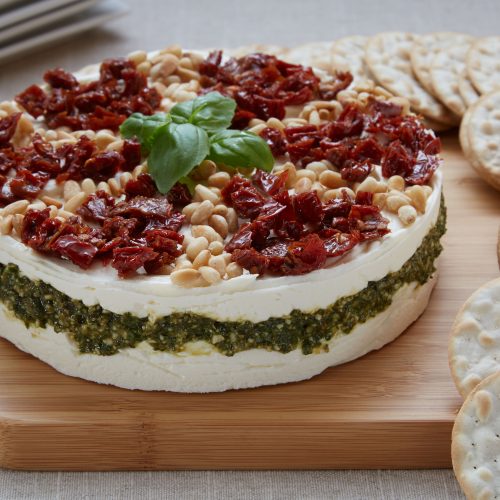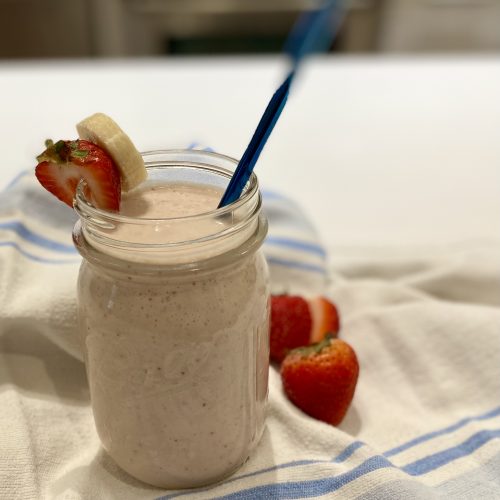
**To celebrate National Nutrition Month, we have a 5-week series of guest posts written by Deepanshi Salwan, MPH candidate and a dietetic graduate student at the University of Toronto.**
It’s March and we are celebrating Nutrition Month! Every year dietitians, dietetic interns, and nutrition students across Canada celebrate Nutrition month to raise awareness about nutrition and the positive impact it has on our health and wellbeing.
This year Nutrition Month centres on the idea that healthy eating looks different for everyone. It is not a one-size-fits-all approach, and your healthy eating will look different from someone else’s healthy eating based on culture, food traditions, personal circumstances, and nutritional needs.
To honour Nutrition Month, I have teamed up with Registered Dietitians and Dietetic Graduate Students from diverse cultural backgrounds to put together a Nutrition Month 2021 blog series! Each week for the month of March, different dietitians and dietetic students will share their food traditions, cultural recipes, and the importance of culture in healthy eating.
Without further ado, let’s get started with Nutrition Month 2021 series – Week 1.
Cultural foods should be a part of your healthy meals
Canada is a country that prides itself on multiculturalism. Yet, the mainstream diet trends tend to ‘steal’ cultural foods’ thunder. With the recent craze around healthy eating, many of you may be are bombarded with the latest trendy diets that do not adequately incorporate your cultural foods. With everyone else embarking on the next food trend, you may feel that you are doing something wrong by not jumping on board. You begin to question the health benefits of your traditional foods.
I introduce my colleagues Novella Lui, Robena Amalraj and Aja Gyimah who will share their insights on making cultural foods a part of your healthy eating.

Novella Lui, RD
www.novellard.com Instagram @livetonourishrd
- What’s your cultural background?
I am a Chinese Canadian, born in Hong Kong and raised in Vancouver.
2. What is the meaning of food in your culture? / How is food used in celebrations or traditions?
Food plays a vital role in Chinese culture, where food is always a part of celebrations. Many of the traditional foods served during celebrations bear symbolic meanings, from togetherness to fortune and luck. For instance:
- In Lunar New Year, we eat the ‘year cake,’ a glutinous rice cake that symbolizes rising prosperity, which has the same homophonic sound as ‘yearly increase.’
- During Dragonboat Festival, we eat glutinous rice dumplings wrapped in bamboo leaves as they depict the commemoration of Qu Yuan, an ancient Chinese poet.
3. What is your favourite cultural ingredient or food or recipe?
I have a long list of favourite foods, but if I had to choose, my favourite is har gow, a steamed shrimp dumpling wrapped in a thin and translucent starch dough. My first memories of eating out as a child with my family were enjoying a dim sum lunch, and har gow was always one of the dishes shared among us. These shrimp dumplings always remind me of my fonds times with my cousins and relatives. You can find a har gow recipe here.

Har Gow (Chinese steamed shrimp dumplings)
4. What would you like to say to Canadians during National Nutrition Month?
All foods, including those from your own culture, fit into a healthy meal pattern. Including and embracing foods from your own culture connects you to your roots and cultural identity. At the same time, learn about other cultures by trying their foods, as food is a portal that connects and nurtures our relationships with other people.

Robena Amalraj, Dietetic Graduate Student
www.nourishwithrobena.com
Instagram @nourishwithrobena
1. What is your cultural background?
My cultural background is Indian. Specifically, I am from the South Indian state of Tamil Nadu.
2. What is the meaning of food in your culture? / How is food used in celebrations or traditions?
India is affectionately called the Land of Spices, and food undoubtedly plays a significant role in its culture. Every region of India has distinct and unique customs but eating with hands is a common practice; it is thought that this not only makes the food taste better, but also feeds the mind and the spirit.
Rice is of particular importance in India and is viewed as the ultimate sustenance; it is often the first solid food that a baby eats and is also eaten by older adults who have trouble eating other foods. In many parts of India, rice is used as an offering during religious rituals and is a symbol of prosperity and well-being.
3. What is your favourite cultural ingredient or food or recipe?
My favourite South Indian food is dosa, which is a thin savoury crepe made from a fermented batter of lentils and rice. It is typically served with sambar (a lentil and vegetable stew) and chutney. My mom made it all the time when I was growing up; not only is it delicious, but it is a comforting and warm reminder of home and family. You can find a recipe here.

South India Dosa served with sambar and chutney
4. What would you like to say to Canadians during National Nutrition Month?
In the health and wellness space, there is often a narrow perception of healthy food. There is a misconception that cultural foods that do not fit into this mainstream image are automatically “unhealthy”. However, healthy eating does not look the same for everyone. Culture and tradition are integral components of food and overall wellness, and you do not need to forgo your culture to be healthy!
 Aja Gyimah, MHSc., RD
Aja Gyimah, MHSc., RD
www.compete-nutrition.ca Instagram @compete.nutrition
1. What’s your cultural background?
I’m biracial: Jewish-Canadian and Ghanaian
2. What is the meaning of food in your culture? / How is food used in celebrations or traditions?
In the Jewish culture, food is a large part of how we observe our holidays. For example, Friday nights are reserved for a family dinner because it kicks off the Sabbath or the day of rest. Also, depending on the holiday you’re required to eat specific foods, like during Passover we have a ceremonial dinner where each food item is symbolic.
In Ghanaian culture, food is tied to many celebrations, get-togethers or even just attending church on Sundays. Within my family, it used to be such a treat because my dad would spend the entire day making light soup. Since COVID, we have been ordering from local Ghanaian restaurants to support them during this time. Now, jollof rice is a staple in our house!
3. What is your favourite cultural ingredient or food or recipe?
Fried plantain is a world-wide favourite, it’s a staple in almost every African, Black and Caribbean cuisine. I usually slice the plantain, rinse it in saltwater and then fry it until it’s brown and delicious! Find a recipe for fried plantain here. On the Jewish side, I’m a huge fan of Challah which is the only type of bread I grew up with. Challah is also the best bread to use for French toast!

Fried plantains
4. What would you like to say to Canadians during National Nutrition Month?
All foods fit within a healthy diet and that includes our cultural/traditional foods. You’re not required to throw away the foods you’ve grown up with to follow a healthy diet. There’s plenty of room for fried plantain – haha!
Bottom Line
There is no single way to eat right and sacrificing your cultural foods is not necessary for achieving good health! No matter what your cultural foods or traditions are, they can be a part of your healthy eating regime. So, ditch the diet trends and incorporate your cultural foods to find your healthy.
Come back next week to learn more about traditional cuisines and healthy eating in our Nutrition Month 2021 blog series.
Let’s Talk
What is your favourite cultural recipe? Let me know in the comments. Click here to learn more about the Nutrition Month 2021 campaign.
I thank Novella, Robena, and Aja for their time and contribution to this post.
 Written by: Deepanshi Salwan, MPH candidate – Deepanshi is a dietetic graduate student at the University of Toronto. Her nutrition philosophy embraces moderation without deprivation. She believes that healthy eating does not have to be complicated and hopes to inspire her audience to live more happy and healthy lives! You can find her on Instagram @deeconstructing_nutrition.
Written by: Deepanshi Salwan, MPH candidate – Deepanshi is a dietetic graduate student at the University of Toronto. Her nutrition philosophy embraces moderation without deprivation. She believes that healthy eating does not have to be complicated and hopes to inspire her audience to live more happy and healthy lives! You can find her on Instagram @deeconstructing_nutrition.






















 Aja Gyimah, MHSc., RD
Aja Gyimah, MHSc., RD
 Written by: Deepanshi Salwan, MPH candidate – Deepanshi is a dietetic graduate student at the University of Toronto. Her nutrition philosophy embraces moderation without deprivation. She believes that healthy eating does not have to be complicated and hopes to inspire her audience to live more happy and healthy lives! You can find her on Instagram
Written by: Deepanshi Salwan, MPH candidate – Deepanshi is a dietetic graduate student at the University of Toronto. Her nutrition philosophy embraces moderation without deprivation. She believes that healthy eating does not have to be complicated and hopes to inspire her audience to live more happy and healthy lives! You can find her on Instagram 
